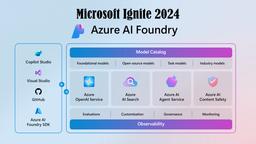Temperstack Introduction
Temperstack is an enterprise-grade proactive SRE platform that automates service catalogs, monitoring, alerting audits, and SLI reporting across observability tools to reduce toil and boost service reliability.
View MoreWhat is Temperstack
Temperstack is a comprehensive SRE command center that provides visibility, proactively surfaces issues, and enables collaboration across teams, from CTOs to SRE engineers. It integrates with popular monitoring tools to offer a unified interface for all observability needs. Temperstack aims to simplify site reliability engineering by automating processes, conducting configuration audits, and providing incident management capabilities.
How does Temperstack work?
Temperstack operates by integrating with existing monitoring tools and cloud providers, offering a centralized platform for managing and orchestrating monitoring across diverse infrastructures. Its AlertIQ feature ensures comprehensive alerting coverage, while the Config Engine conducts configuration audits and automates remediation. The platform provides automatic resource discovery and sets up alerts by correlating data from various observability tools. It also includes incident management features with escalation policies and on-call schedules to ensure timely response to critical issues. Temperstack's cloud-agnostic approach allows for consistent alerting policies and configurations across multiple cloud environments.
Benefits of Temperstack
By using Temperstack, organizations can significantly reduce SRE toil and improve service reliability. The platform saves engineering time through automation of resource discovery and comprehensive monitoring. It provides unparalleled visibility into complex microservices architectures, helping teams proactively maintain high service standards. Temperstack's unified interface simplifies management across multiple cloud providers and observability tools, leading to more efficient operations. Additionally, its cost-effective offering and seamless integration capabilities allow companies to modernize their incident management processes without disruption, ultimately enabling engineers to focus more on product development and critical tasks.
Related Articles
Popular Articles

Black Forest Labs Unveils FLUX.1 Tools: Best AI Image Generator Toolkit
Nov 22, 2024

Microsoft Ignite 2024: Unveiling Azure AI Foundry Unlocking The AI Revolution
Nov 21, 2024

10 Amazing AI Tools For Your Business You Won't Believe in 2024
Nov 21, 2024

7 Free AI Tools for Students to Boost Productivity in 2024
Nov 21, 2024
View More

